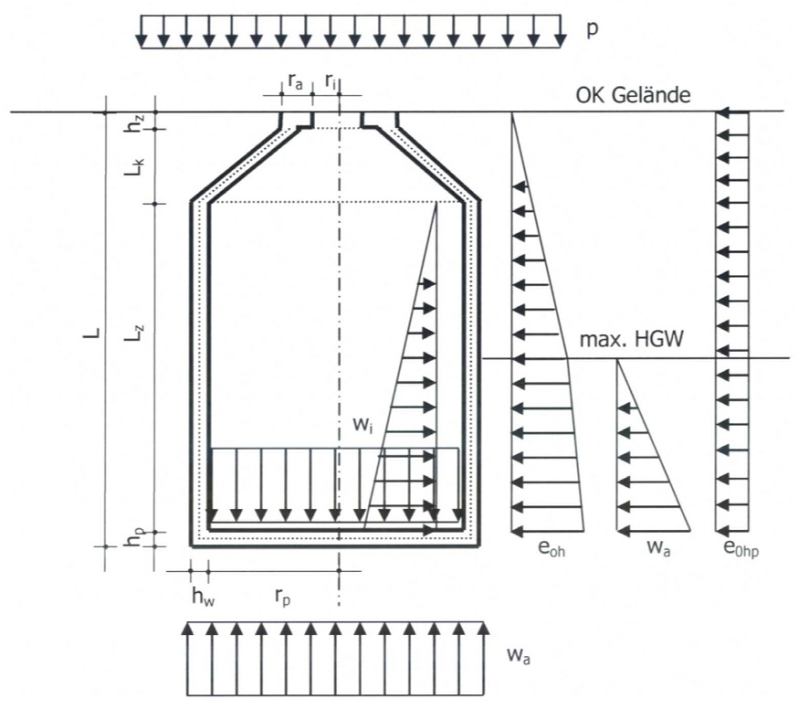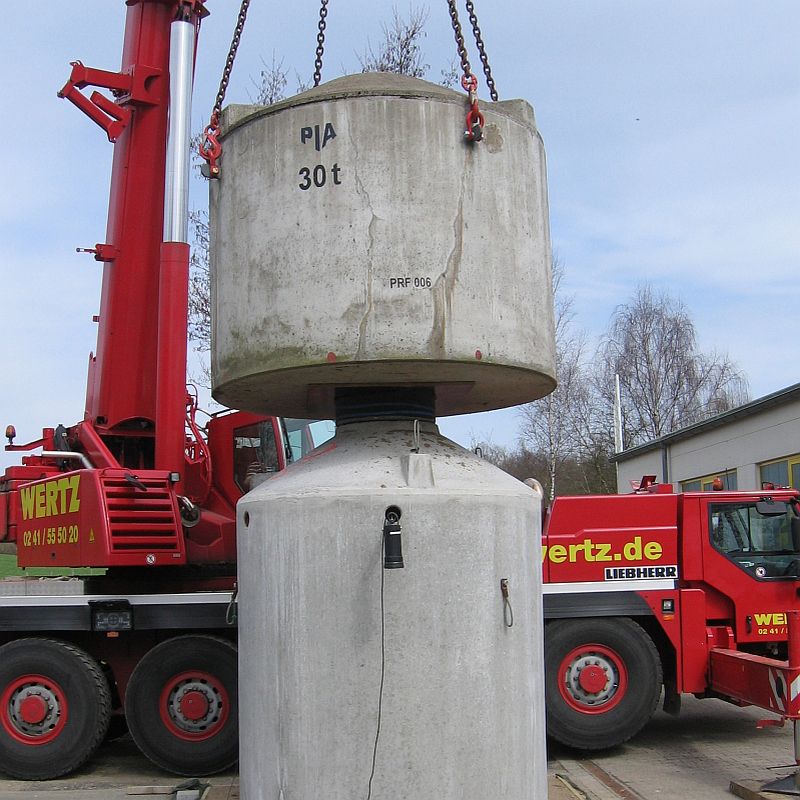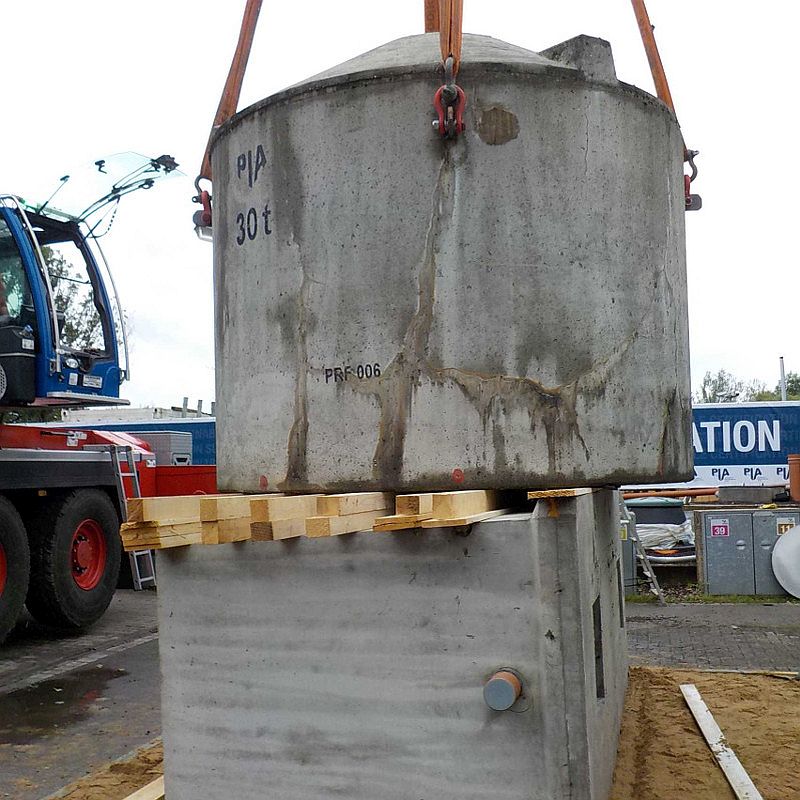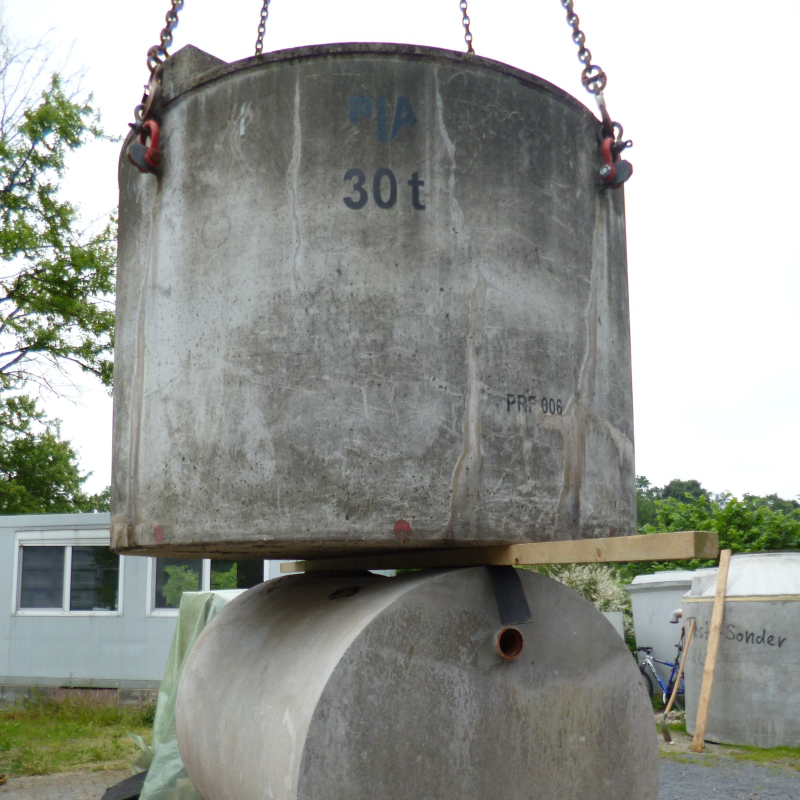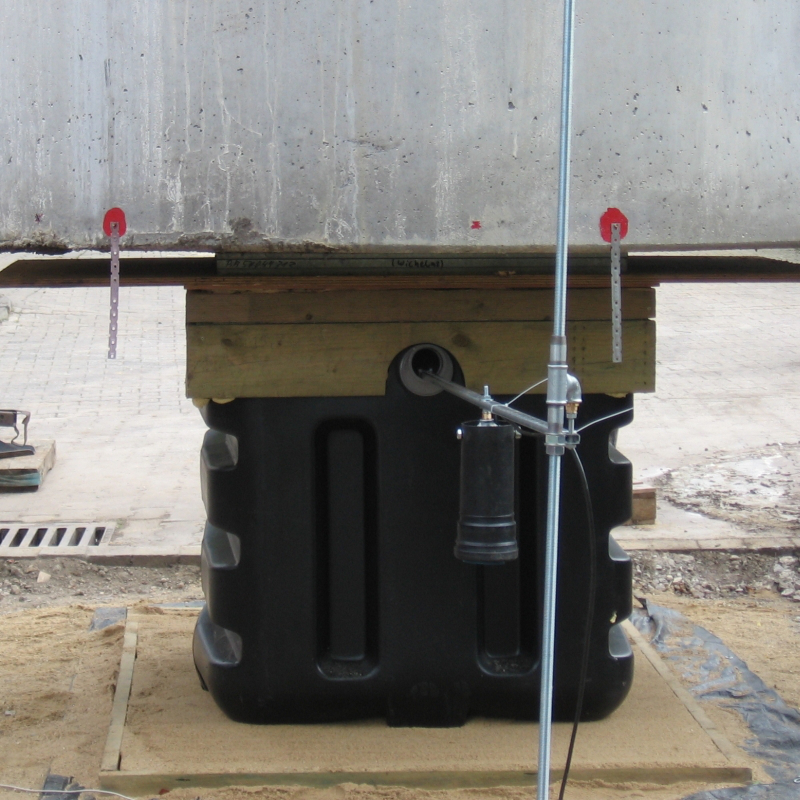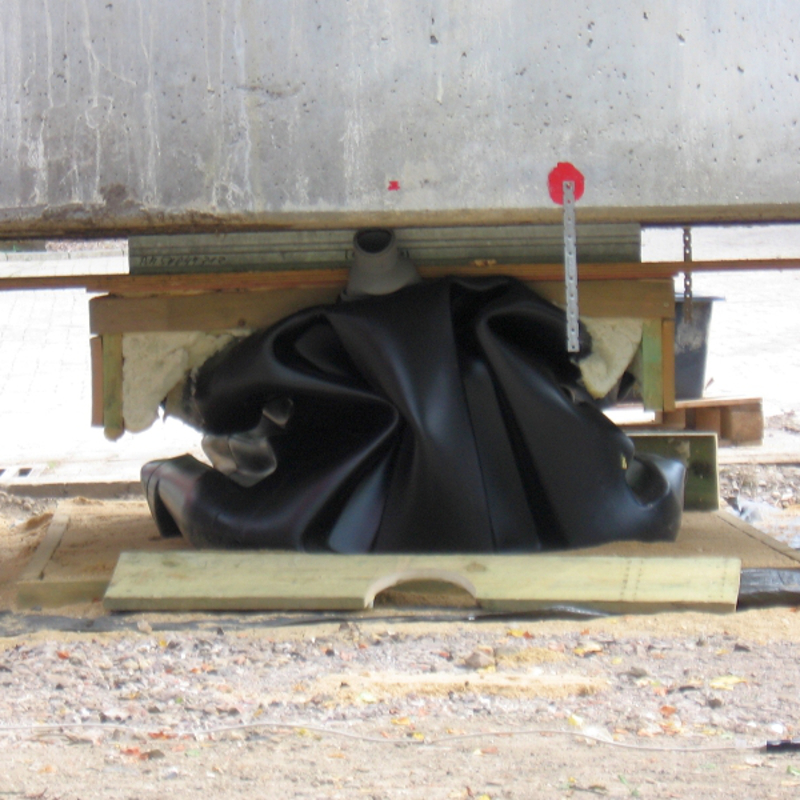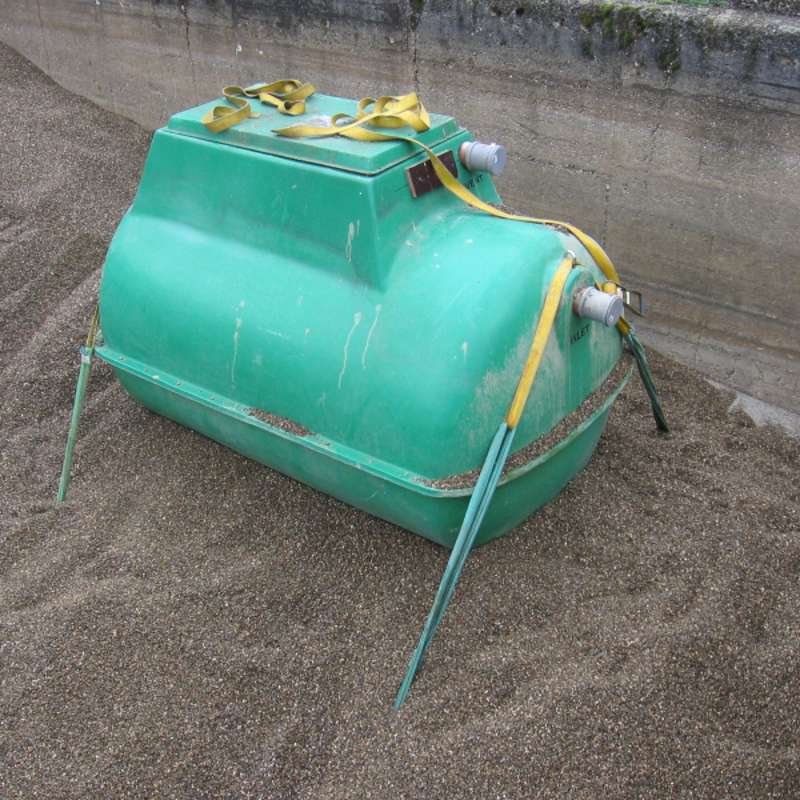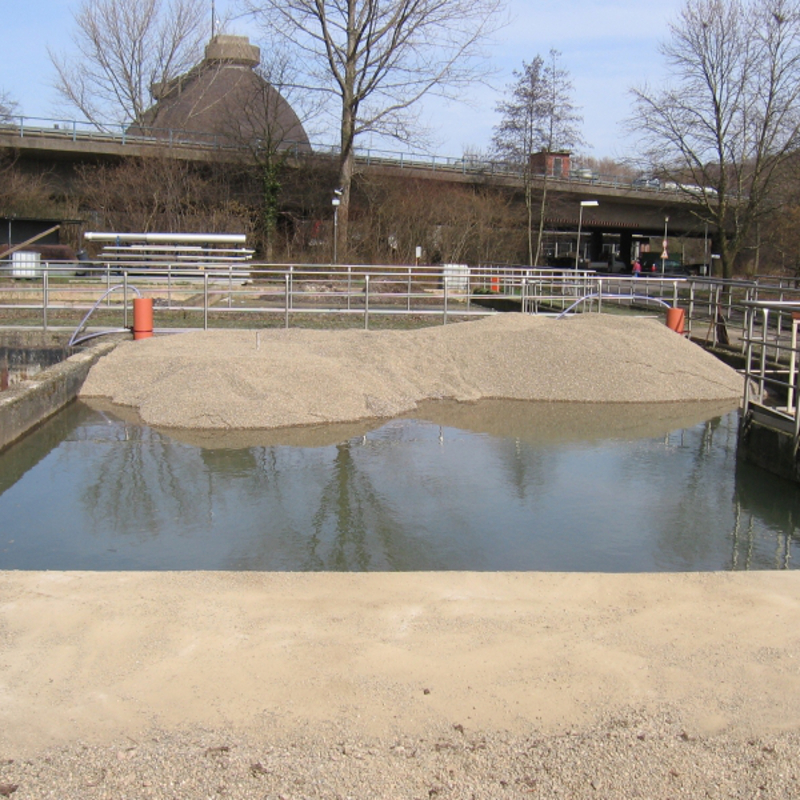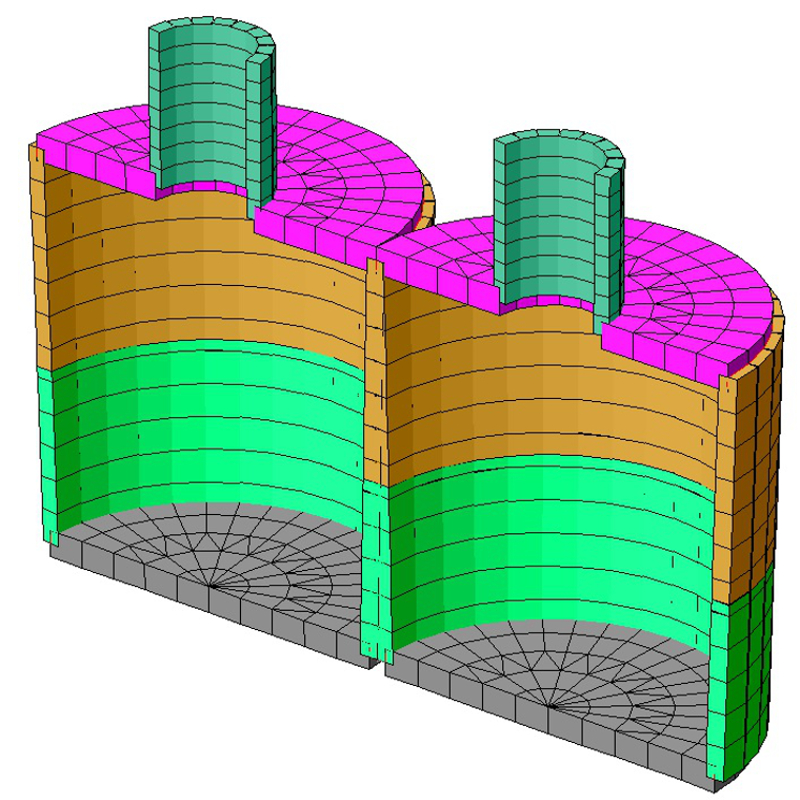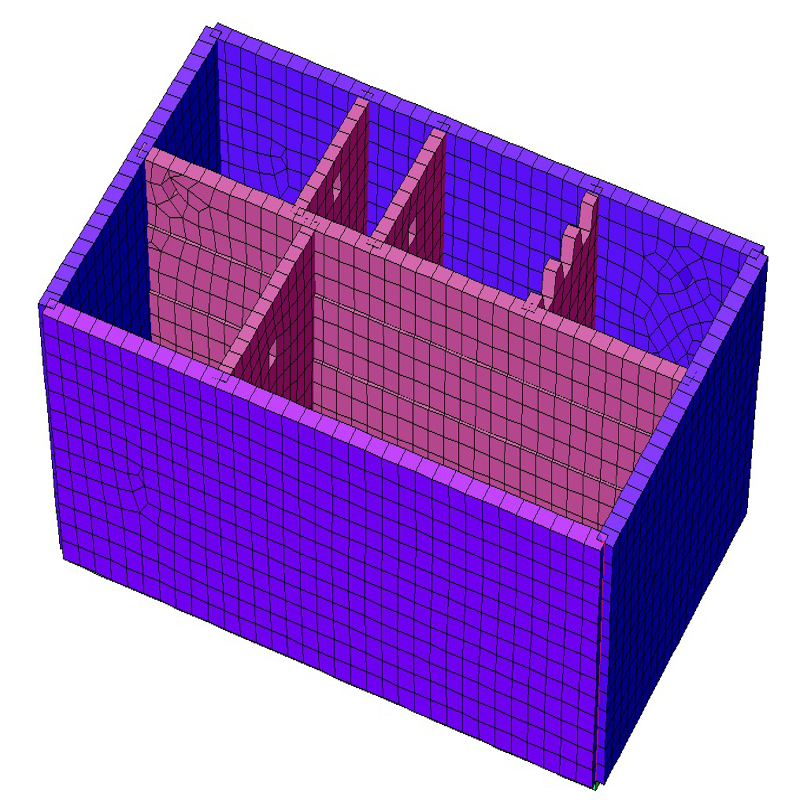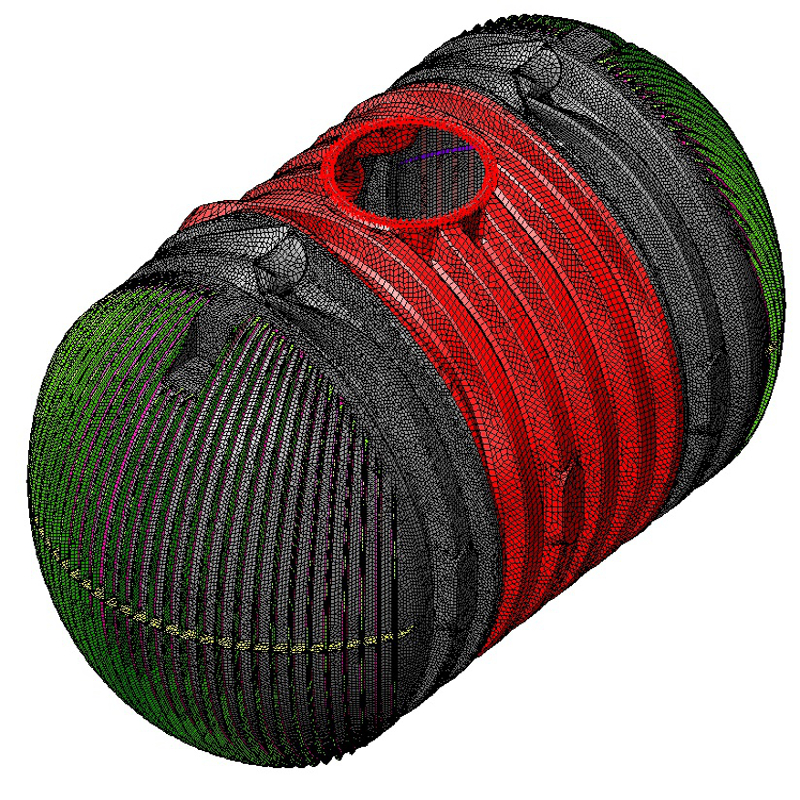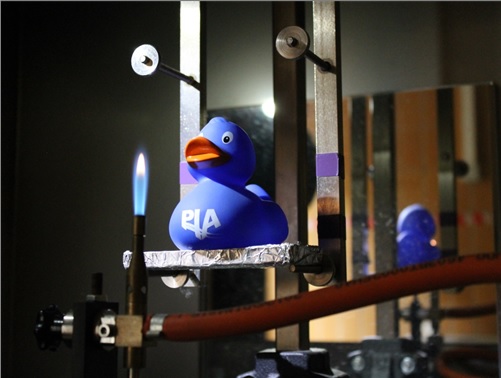According to DIN EN 12566, small sewage treatment plants are sufficiently stable when they can withstand the stresses of handling, installation and operation – such as maintenance and sludge removal – over their entire service life. The tank may not collapse, nor may major deformations occur to an inadmissible extent. Estimated factors that influence stability are soil loads, water pressure and traffic loads as a result of pedestrian loads.
Actions on a cylindrical tank are as follows:
- p: traffic load
- wa: water pressure due to groundwater
- wi: inner water pressure
- eoh: horizontal, active earth pressure
- eohp: earth pressure due to the traffic load p
The stability can be tested in accordance with DIN EN 12566, either by a mathematical verification or by applying a testing procedure given in Annex C of the standard. The type of procedure depends on the tank material. Manufacturers can decide on their own which method should be used for the proof of stability. It is permissible to test or to mathematically verify the least efficient reservoir of a series. For each individual case and depending on the design and the installation conditions, manufacturers must carefully examine and clearly document if they choose the least favourable from a series.


